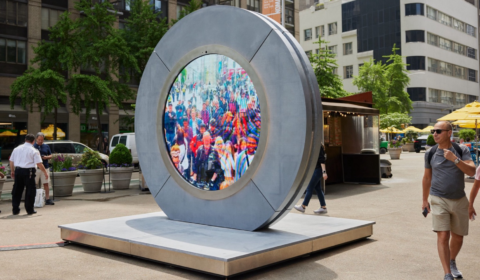An extinction event raining down on us from space is hardly a pleasant thought. Luckily scientists are working on ways we might avoid going the way of the dinosaurs.
Last year, NASA and the Federal Emergency Management Agency (FEMA) released an 18-page document outlining the steps they would take over the next 10 years to prevent dangerous asteroids striking earth. This might seem like a bit of a waste of government resources considering that your chances of being killed by a flying cosmic rock are about one in 200,000 to 700,000, depending on who you ask.
The whole thing becomes less ridiculous when you consider the consequences of an asteroid collision. Not a single person – not even Hitler – could possibly wipe out the entire human race. An asteroid could. If a rock just 10 kilometres across struck earth it would be sayonara for every last one of us.
In fact, chances are an asteroid already has wiped out all life on earth when a space rock made an unwelcome visit to the dinosaurs. Moreover, whilst the likelihood that an extinction sized asteroid will hit earth today is astronomically low, the likelihood that one will hit earth at least once every billion years is 100%.
Aka, there’s a 100% chance that another extinction event will happen at some point in the future, we just don’t know when.
So, yea, it seems pretty sensible to prepare.
But, worry not reader. There are several methods that scientists have come up with to divert, stop, or destroy an oncoming asteroid – or to carry out ‘rapid response NEO (near-earth object) reconnaissance missions’. Some seem pretty legit, and some are straight out of the movie Armageddon where the filmmakers try to convince us it would be easier to train miners to navigate space than to train astronauts to use mining equipment.


Here are some of the most notable methods, both sound and unsound, that could potentially save us from an attack of the smashy space rocks…
1. Throw something big at it
Let’s start with the plan that, according to last year’s report, it seems NASA favours.
The third part of NASA’s five step preparation and prevention plan involves testing the effects of launching a spacecraft that’s moving really, really fast at an asteroid traveling through space. Astronomers are hoping that this would effectively change the body’s orbit and knock it off course.
To envision this it’s useful to think of two billiard balls interacting in a game of pool. The energy possessed by the moving billiard ball (kinetic energy for those of us who pay attention in science class) get transferred to the other balls on the table, making them move. In this case, the cue ball is an unmanned spacecraft similar to the probe used in NASA’s Deep Impact mission (no, not the movie).


2. Blow it up with nuclear weapons
If you need to blast a huge rock to smithereens, the go-to-guy is probably the atomic bomb. This extremely macho approach would involve slamming a nuclear warhead into an approaching asteroid and detonating it. However, in this article’s second reference to the film Deep Impact, you might recall that when Morgan Freeman tries this exact approach onscreen, the big asteroid breaks apart into loads of medium sized asteroids, which pose just as big of a threat to earth. Now that’s what I call problem solving.
It’s theorised that a better use of nuclear power would be to detonate a warhead near the asteroid, letting material vaporise on one side due to the heat of the explosion. The imbalanced weight would then serve to change the trajectory of the asteroid.
























